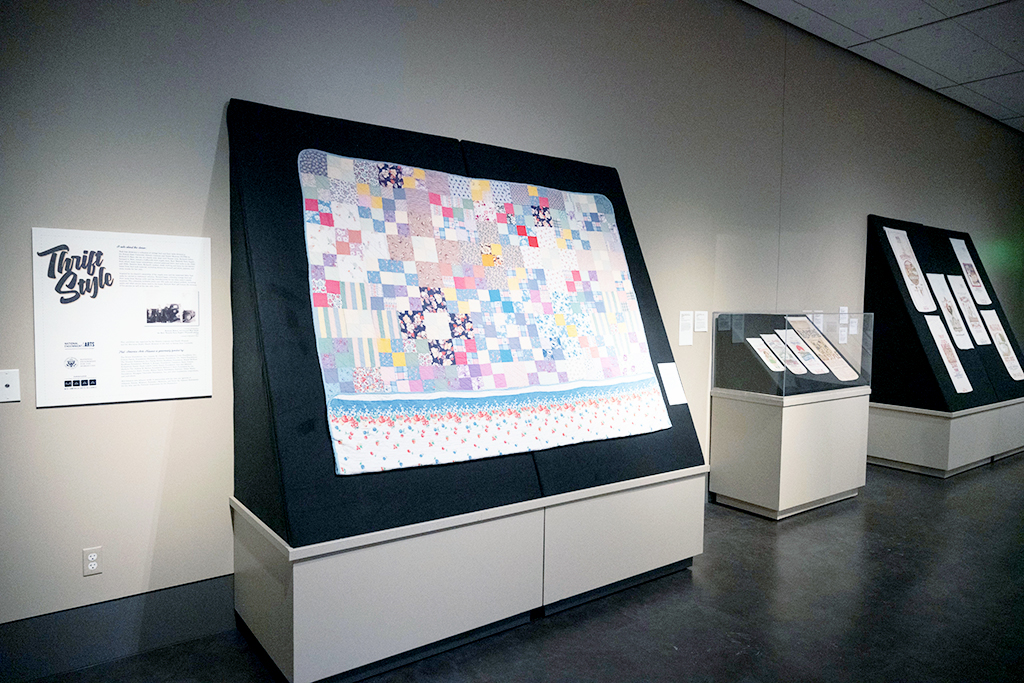
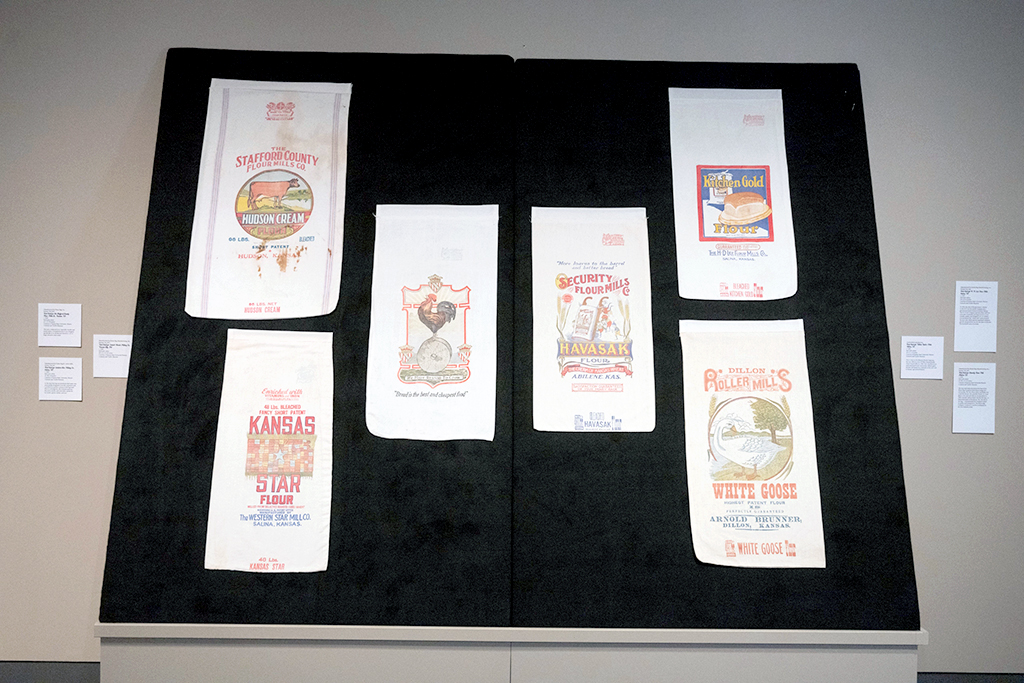
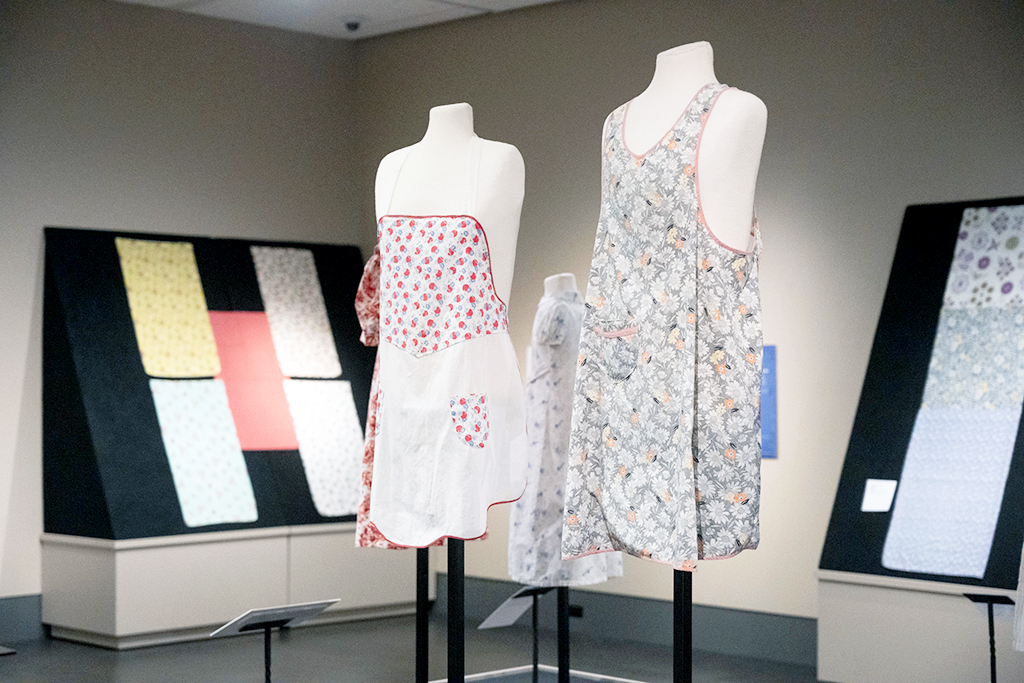
The thrifting of used clothing dates back centuries, but notable “upcycling” eras in the United States include the late 1880s and the years surrounding World War II.
“Thrift Style” is one of three exhibits in the Spring 2023 collection at the Avenir Museum at Colorado State University. The others are “Nostalgia Mode: Fashion and Sentimentality in the 1970s” and the latest “New Threads” donated to the Avenir.
The Thrift Style and Nostalgia Mode collections will be on display until April 30 while New Threads will be shown until May 6. See the Avenir’s website for more information.
“I think the overarching theme to the three spring semester exhibitions is one of looking to specific moments in the past when society was experiencing times of reflection, change and upheaval,” said Megan Osborne, the museum’s assistant curator and collections manager. “Such as economic hardship during the early part of the century and an introspective look at the past during the American bicentennial period.”
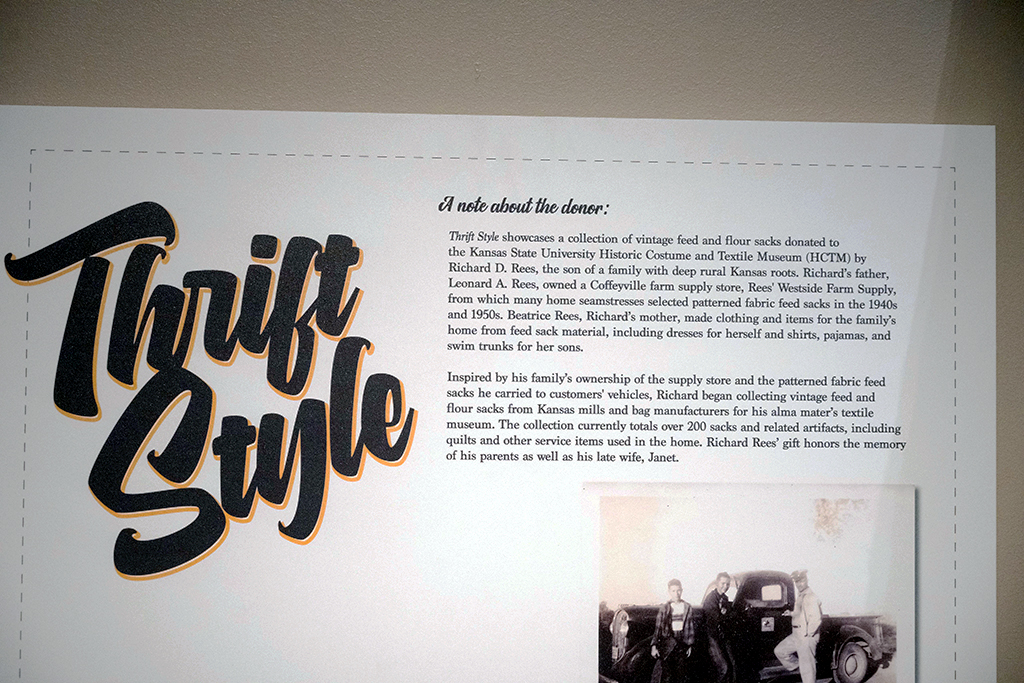
Thrift Style
Osborne said Thrift Style is on loan from the Historic Costume and Textile Museum at Kansas State University. “The pieces in the exhibit largely date from the 1930s and 1940s,” she said. “The Avenir was able to supplement this exhibition with an object from our collection, a petticoat partially constructed from a flour sack from the 1880s.”
Osborne said the exhibition pieces — some using small scraps and pieces of milling companies’ packaging — demonstrate the ingenuity and resourcefulness of American women during a time of great uncertainty.
“The two large quilts in the show were pieced together with scraps of feed and flour sack fabric,” Osborne said. “These quilts demonstrate that a functional object can be beautiful and an example of zero-waste sewing.”
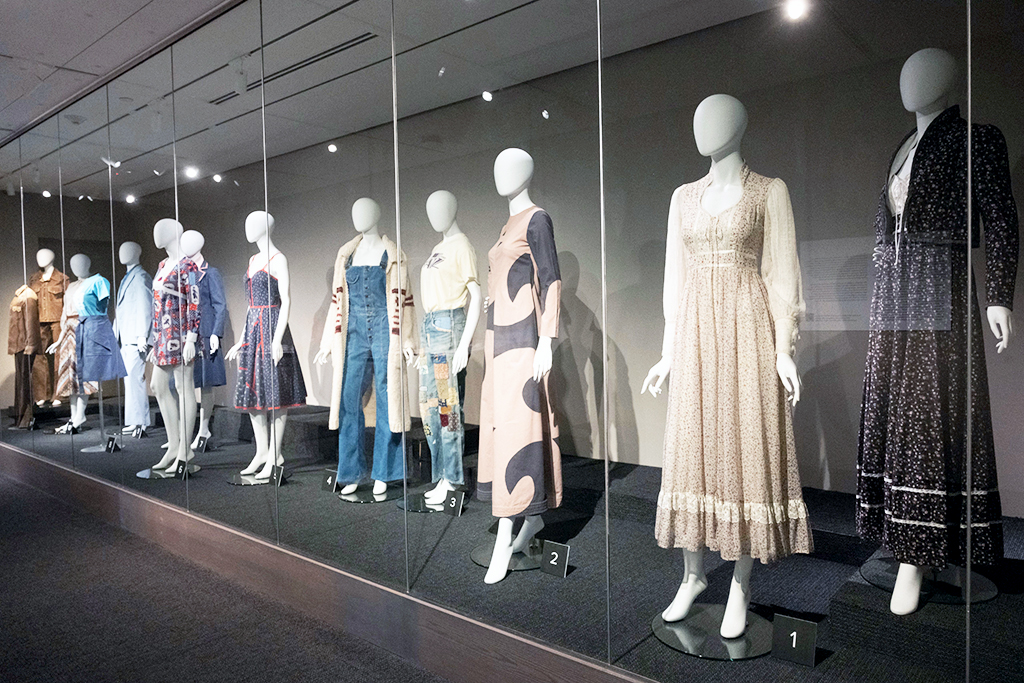
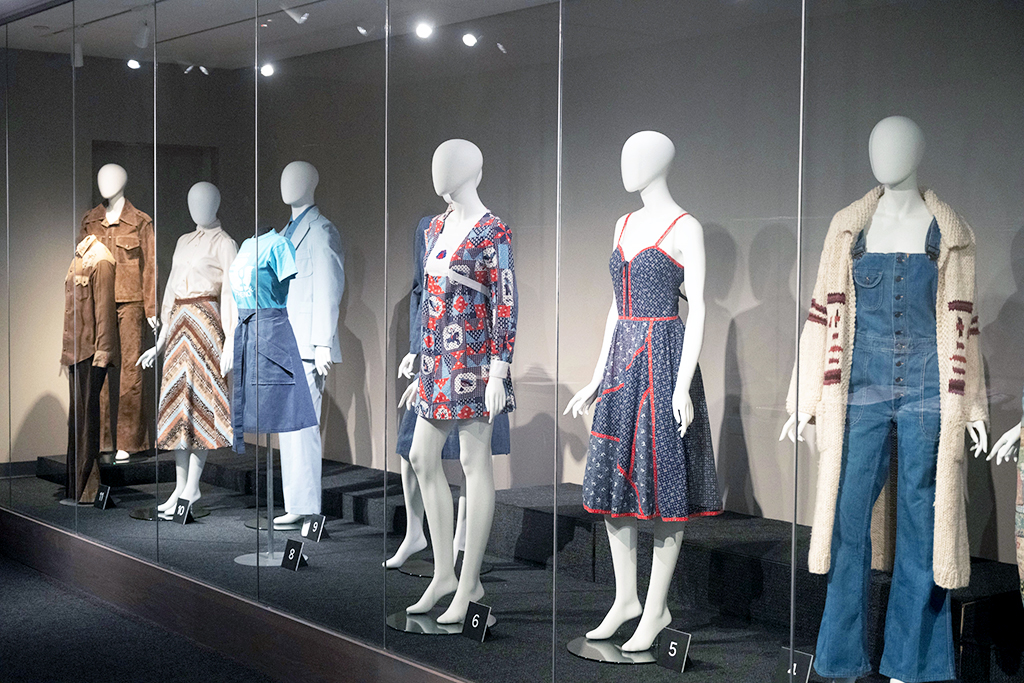
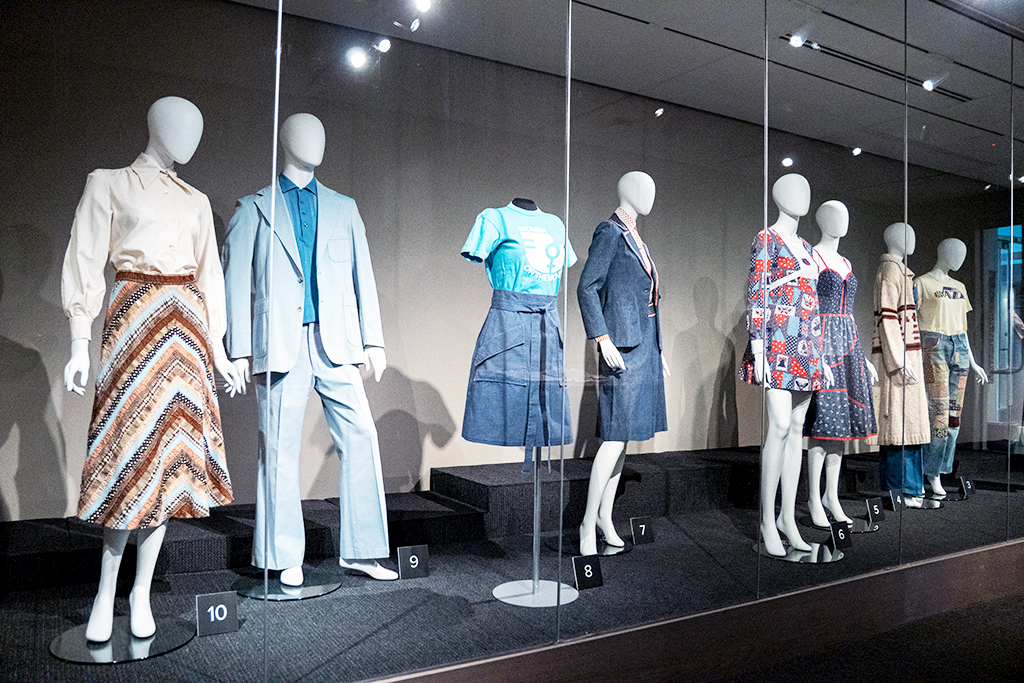
Nostalgia Mode: Fashion and Sentimentality in the 1970s
Paula Alaszkiewicz, an assistant professor in the CSU Department of Design and Merchandising and the curator for the Avenir Museum, said the “Bicentennial era” from 1971 until 1976 was characterized by a widespread interest in the past.
“Film and television programs such as American Graffiti (1973) and Little House on the Prairie (1974) presented a romanticized and idealized version of American history,” Alaszkiewicz said. “Cultural theorists have referred to such rose-tinted interpretations as ‘nostalgia mode.’”
Alaszkiewicz points to references of 19th-century fashion in dresses by the fashionable “Gunne Sax” that correspond to the romanticized “prairie” dress style that was popular in the 1970s.
“The revived interest in handcrafts such as knitting, patchwork and embroidery can be seen in many pieces in the exhibition,” Alaszkiewicz said. “While some of these pieces were indeed homemade, others were store bought.
“Bicentennial commemorations were occurring at a time of significant social change. This dichotomy between history and change is encapsulated in the exhibition by a T-shirt from the National Women’s Conference of 1977, which is paired with a skirt that was homemade in 1976.”
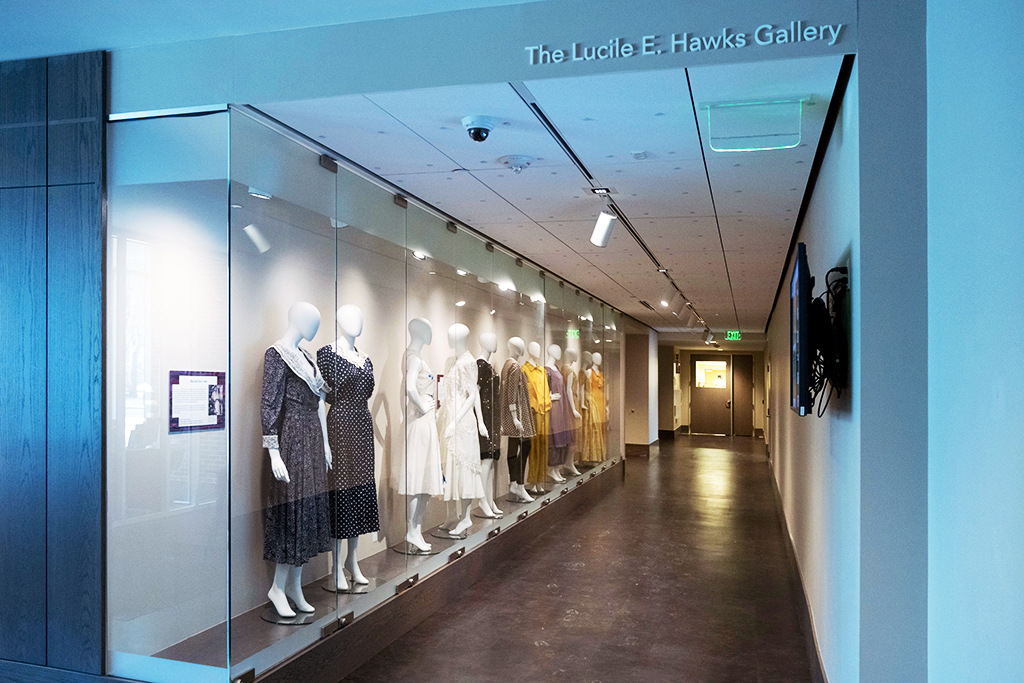
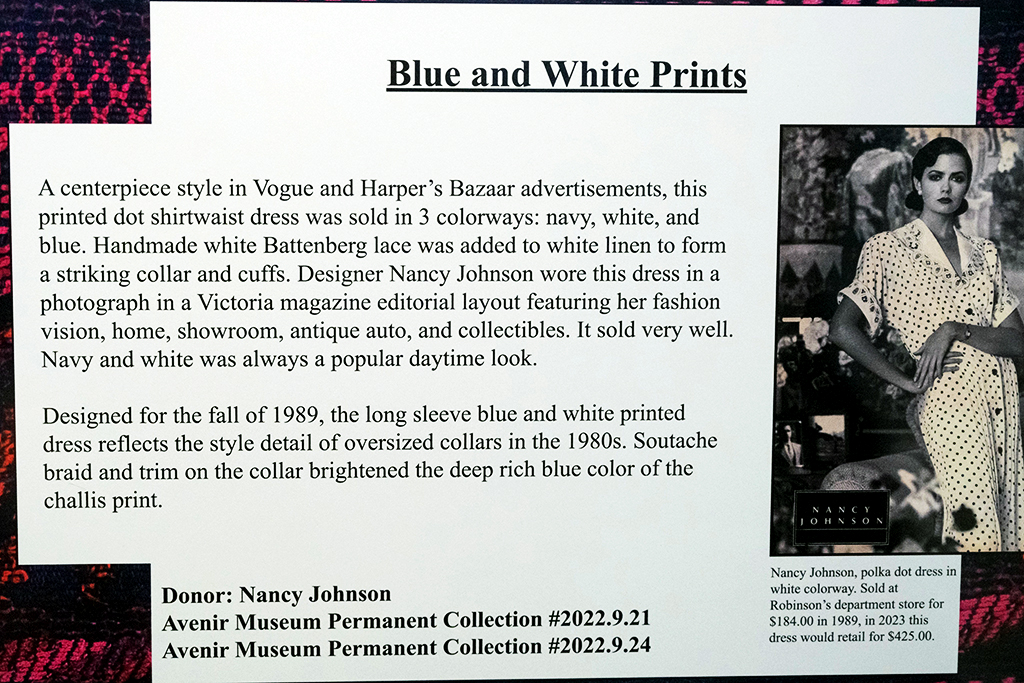
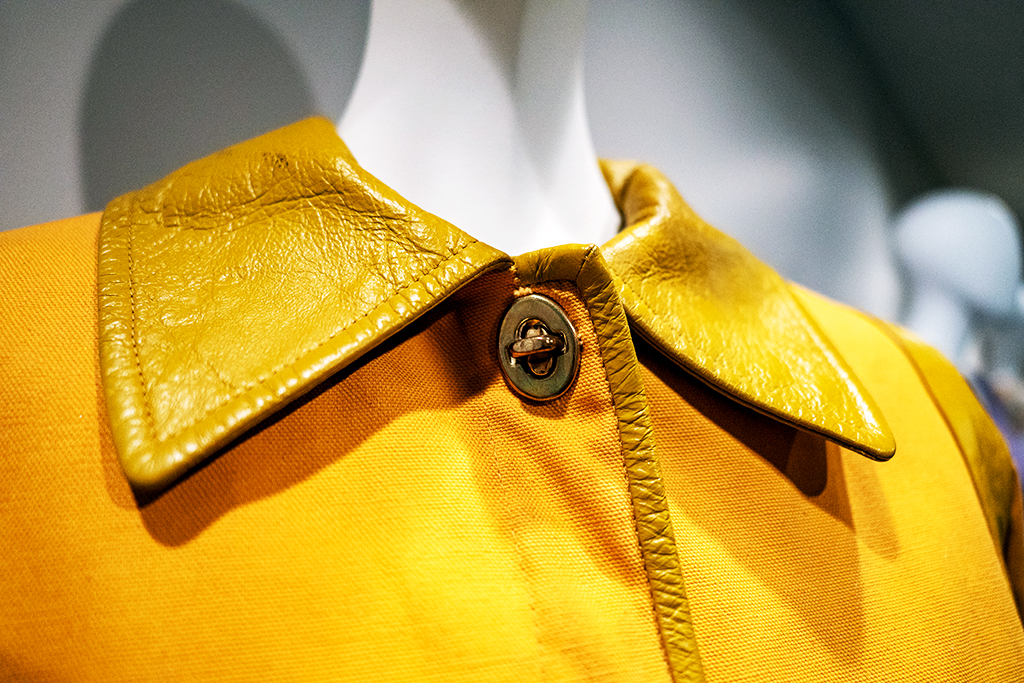
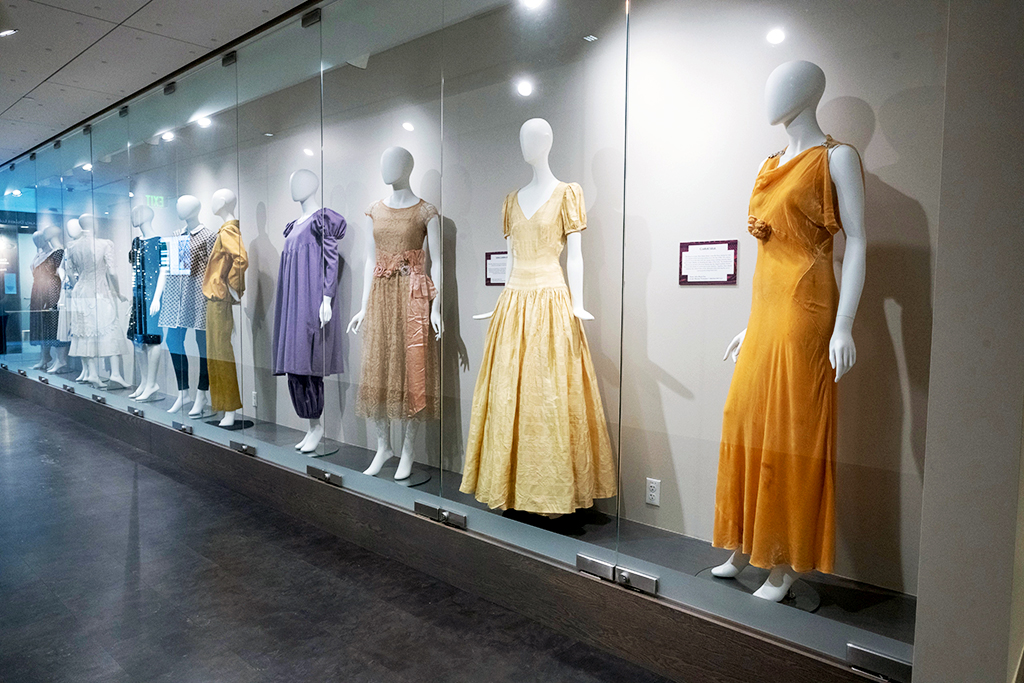
New Threads
The Spring 2023 installation of New Threads features 11 garments recently donated to the Avenir, including five from designer Nancy Johnson and two from designer Bonnie Cashin.
Johnson “often incorporated ornaments from domestic linens like handkerchiefs and table clothes into her designs,” Osborne said. “A yellow canvas and leather coat shows off the brass toggle fastener that remains one of Bonnie Cashin’s biggest contributions to the world of design and is used to this day by luxury American fashion house Coach.”
The Avenir Museum is part of the Department of Design and Merchandising in the College of Health and Human Sciences.